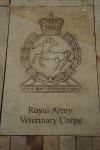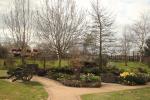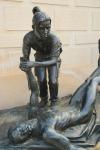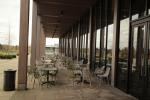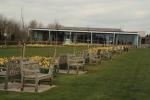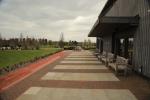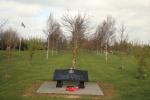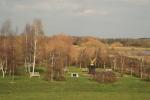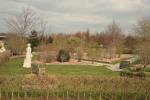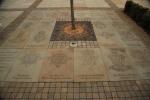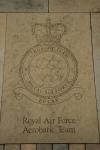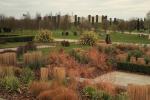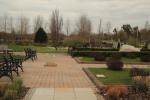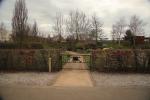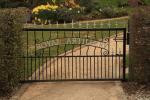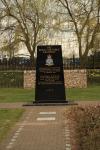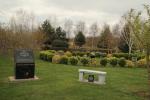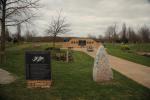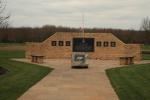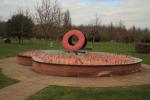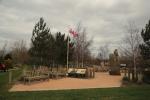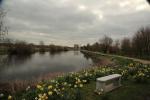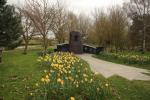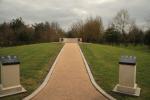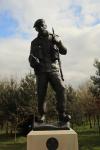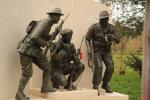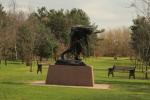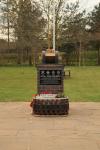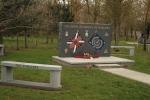The National Memorial Arboretum
Wednesday 27th March 2019
It was a very early start to the day this morning, I was out on the Barff for 6.00am for a good long walk with Meg and Gracie. On returning home it was a quick shower and change of clothing before I took M & G to the health Spa for a couple of days whilst Jen and I had a few days away with our friends Pedro and Mavis.
I had wanted for several years now, to visit the National Memorial Arboretum in Staffordshire. To the best of my knowledge the last time I visited Staffordshire was in the 1960’s when I was in the Scouts, we used to have our annual Summer Camps at the National Scout Centre there, great times.
Today though, we had arranged to meet our friends at the Arboretum for around 11.30am. It was a reasonably straightforward drive down to Alrewas, near Lichfield in Staffordshire, though the A38 does seems endless and just under a hundred miles from home to the Arboretum which took us approximately one and a half hours.
From the Remembrance Centre main entrance and Orientation Zone we headed outside onto the ‘Hero’s Square’ which was a beautiful cloistered type courtyard, with Red Oak’s planted amongst the York stone patio area. Many of the paving slabs have been carved with the different regiments, crests and badges of the Armed Forces. The courtyard has been divided into four main areas. The Royal Navy, including Ships, Squadrons, units and Associations are located adjacent to the restaurant. The British Army, their Corps and Regiments are located in the central section of the courtyard. The Royal Air Force Squadrons, units and Associations are situated to the far side of the courtyard adjacent to the chapel and the Livery Companies including the organisations associated with the Armed Forces are adjacent to the far end of the restaurant just in front of the Boyes Garden.
After meeting our friends for a coffee and snack in the small cafeteria adjacent to the chapel, we boarded the land train for a really good and informative fifty minute ride around the site. The train stopping at various places along the route to enable us to look at some of the remarkable memorials, it is a growing tribute to those who have served and continue to serve our country. The Arboretum covers an area of over one hundred and fifty acres, with some thirty thousand trees planted around the site. There are over three hundred and fifty memorials for military and civilian organisations and associations, together with tributes for individuals. Although planting of the trees was started in 1997 it wasn’t until March 2017 when His Royal Highness the Duke of Cambridge officially opened the Remembrance Centre.
The Arboretum has been divided into nine zones which are clearly shown in the Orientation Guide in the visitors centre, as well as maps and interactive screens. There are plenty of Guides/information officers to answer any questions and point you in the right direction. The skyline at the moment (until the trees grow a little taller) is dominated by the Armed Forces Memorial, dedicated in October 2007 by Her Majesty the Queen. The memorial stands some six metres in height by one hundred metres wide at the base narrowing to fifty metres wide at the top and recognises the 16,000 service men and women who have given their lives in the service of the country since the end of the Second World War. Pedro was telling me that he went to school with a lad who on leaving school joined the Army and was murdered in Northern Ireland by the IRA in 1974. We asked one of the guides as to where his name would be on the Memorial Wall and within minutes, after a quick call to the central office, we were able to pin pointed his name on the memorial. Since the end of the Second World War the Armed Forces have been involved in over fifty conflicts around the world, each one remembered at this memorial. Also within this vast memorial are two bronze sculptures created by Ian Rank-Broadley which also leave a lasting memory.
There are some very moving monuments and memorials within the Arboretum, another we visited was in the Far East Zone and in particular the Sumatra Railway, where some 5,000 allied Prisoners of War helped to construct the railway line. The story boards and pictures and reports in the ‘Far East Prisoners of War Memorial Building’ are quite harrowing, especially regarding the conditions the prisoners were living in and the conditions in which they were forced to work.
We spent a good four hours within the Arboretum, we could easily have spent all day, it is a remarkable place and well worth another visit.
Pictured below are just a small selection of the Memorials at the Arboretum.
|

